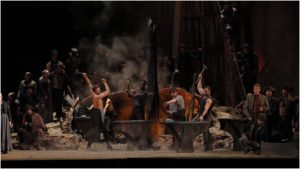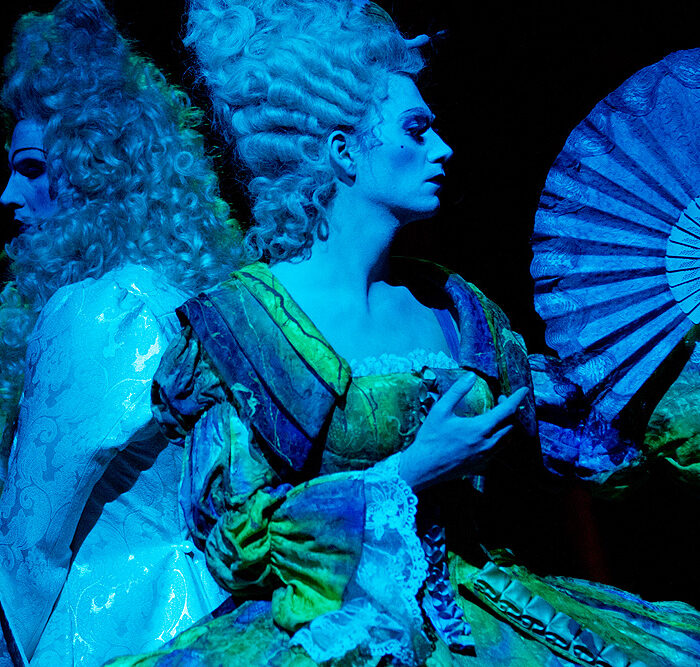
Opera Profile: Verdi’s Ever-Melodic ‘Il Trovatore’
By David SalazarA successful performance of Verdi’s “Il Trovatore” is relatively easy, according to Enrico Caruso. All that is needed are the four greatest singers in the world.
And Caruso was not really joking as that is exactly what the second installment of Verdi’s middle-period trilogy truly requires.
“Il Trovatore” first premiered on Jan. 19, 1853 and has been a major operatic staple since. The work is so lush with melody that all of the world’s greatest singers have attempted one of the four major roles that are the foundation for the work.
Interestingly, “Il Trovatore” has also drawn much attention for its quick-fire libretto that jumps quickly through time, much of the major drama taking place off-stage.
Short Plot Summary
Ferrando relates the story of the dying count who once found a gypsy in her infant child’s bedroom. He had her burned at the stake. Out of vengeance, the gypsy’s daughter stole the Count’s other child. His bones were found burned, but the Count never believed his son to be dead.
In an ensuing scene the Conte di Luna, the son of the Count referenced in Ferrando’s story, seeks out his beloved Leonora though she is in love with the troubadour Manrico. Manrico sings to her and shows up as the Count tries to force himself on Leonora. They duel.
At the gypsy camp, the gypsy Azucena confesses to her son Manrico that in seeking vengeance for her mother, she stole one of the Count’s children and burned him. But when she saw the burning body, she realized it was her own child, not the Count’s. Manrico realizes that he is not his mother’s son, but she ignores his questioning and instead commands him to murder the Count if he were to encounter him again.
Manrico is told that Leonora believes him dead and rushes off to find her. Leonora is entering a convent but is stopped by the Count, who wants to steal her away. Manrico arrives on the scene with a number of gypsies, inciting an all-out battle while Manrico and Leonora sing of the ecstasy of seeing each other again.
At the Count camp, Di Luna encounters Azucena who has been searching for Manrico. Upon realizing that she is the mother of his rival, he seeks to leverage her capture to his advantage.
Manrico sings of his love to Leonora but upon finding out about his mother’s capture, he rushes off to save her.
Manrico has been imprisoned after his failed attempt to save his mother. Leonora plans to give herself to the Count in exchange for Manrico’s freedom, but poisons herself. The Count agrees to free his rival after possessing his beloved. Leonora tells Manrico to escape, but he realizes the price she paid. He rejects her but then realizes she is dying, as does the Count. Angered by the turn of events, the Count orders Manrico’s immediate execution but not before learning from Azucena that he has just murdered his own brother.
Famous Musical Numbers
Where to begin? The entire piece is one famous musical number after another.
Leonora gets a whopping five arias in the entire opera and each one is notable. “Tacea La Notte placida” and “Di tale amor” are characterized by ascending vocal lines to emphasize the pleasure of Leonora’s love for Manrico. Meanwhile “D’Amor sull’ali rosee” is the complete opposite, the music filled with descending figures to express her pain and suffering at Manrico’s capture. The famed “Miserere” takes place in the lower range of the soprano, exploring the impending doom before her cabaletta returns to an aspiration quality similar to the first two arias.
Di Luna gets the tender aria “Il balen del suo sorriso” which is counterpointed by Manrico’s passionate “Ah si! Ben mio,” both arias showing the men’s distinct love for Leonora. They both get passionate cabalettas thereafter, though Manrico’s “Di Quella pira” is noted for the interpolated high C most tenors add at the climax of the aria.
Azucena gets the famous “Stride la vampa,” though her ensuing monologue “Condotta ell’era in ceppi” is impressive in its emotional build and cathartic explosion.
The opera is also rife with ensembles including a famous trio between the three lovers, the duets between Manrico and Azucena, the duet between Leonora and di Luna, and the gypsy chorus “Vedi le fosche notte.”
Strangely, there is no love duet for Leonora and Manrico, though they get a brief passage between Manrico’s two famous arias.
Watch and Listen
Here is a performance featuring Plácido Domingo, Raina Kabaivanksa, Piero Cappuccilli, and Fiorenza Cossotto.
Categories
Opera Wiki

